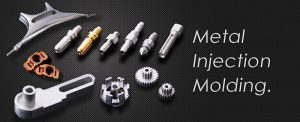Titanium alloy
What is a titanium alloy?
The main component of any titanium alloy is the namesake element titanium. However, adding various other elements such as aluminum and vanadium to form alloys boost the natural advantages such as corrosion resistance and mitigate the downsides of pure titanium such as mechanical properties. Titanium alloys have widespread applications in aircraft, chemical plants and sporting and medical equipment, etc. thanks to their excellent specific strength, biocompatibility and corrosion resistance. However, downsides include the difficulty in machining and cutting the materials and the high cost of casting or die-casting since its high melting point and reactive to oxygen. Titanium alloys can be roughly classified into three categories, namely α-, β- and α + β types, according to the metallographic structure. These alloys types are controlled by additive elements majority, however, its more structure can be altered by heat treatment too. The Ti-6Al-4V alloy, in the α + β category, one of our most experienced product which is combining both strength and durability and highest demand in the market.
Main Types of titanium alloy and heat treatment
As an example, the main titanium-based material properties are listed below. – noting that the actual physical properties differ considerably depending on the type of heat treatment applied (i.e. micro metal structure) – we welcome customer enquiries citing target specifications with characteristics to match.
Titanium was procession by MIM
MIM – paves the way for a processing system capable of mass-producing high-precision parts that would have been difficult to manufacture with previous methods. The fact that this approach allows mass production from moulds similar to plastic injection moulding reflects its ability to produce parts with numerous free-form surfaces, holes and axes or gear shapes the mass production of otherwise difficult-to-process materials.
Moreover, underpinned by powder metallurgy, ample scope remains to combine a range of alloy powders and mix in additive elements when developing new alloy systems.
However, metals with high activity like titanium alloys are prone to react with lighter elements such as oxygen, nitrogen and hydrogen. Moreover, the metal injection moulding or MIM method, catalyzed by fine powder in the order of microns, impacts significantly on physical properties and requires in-depth sintering expertise. Likewise, on a global scale, given the need to determine the metallographic structure of final products via a range of elemental analyses, only certain MIM manufacturers capable of consistently evaluating physical properties can meet that requirement.
If you was interested into mass produce small complicated designed titanium or titanium alloy products, please contact us.

